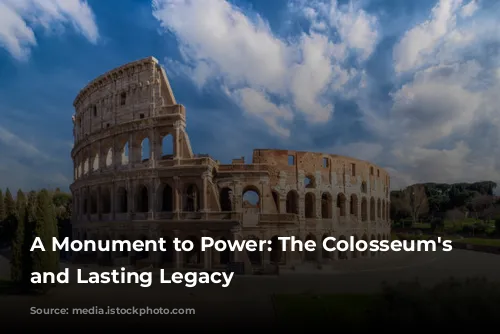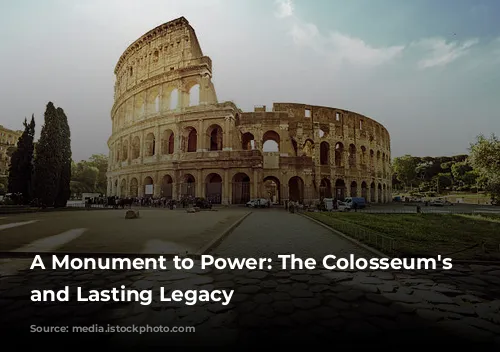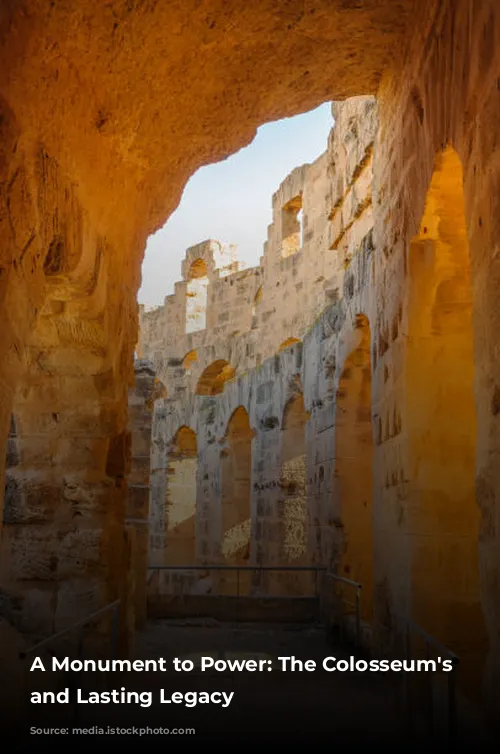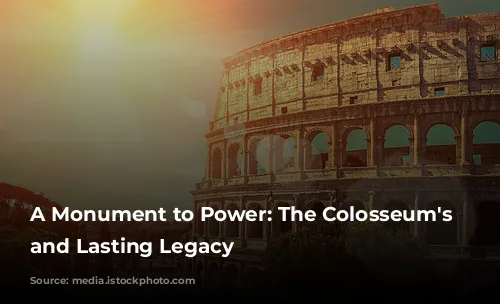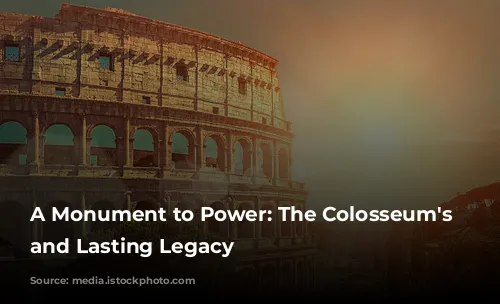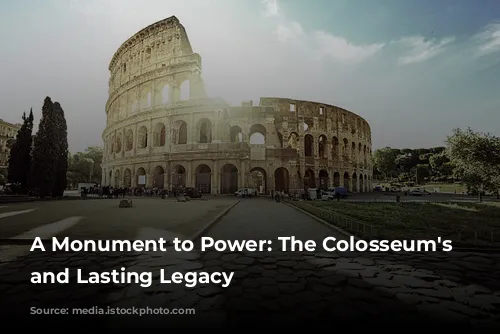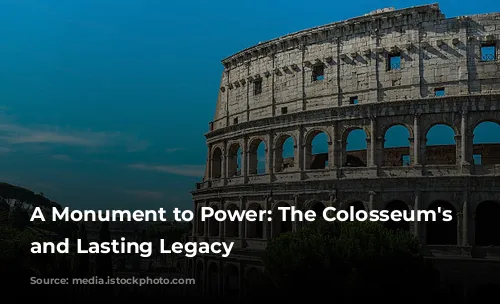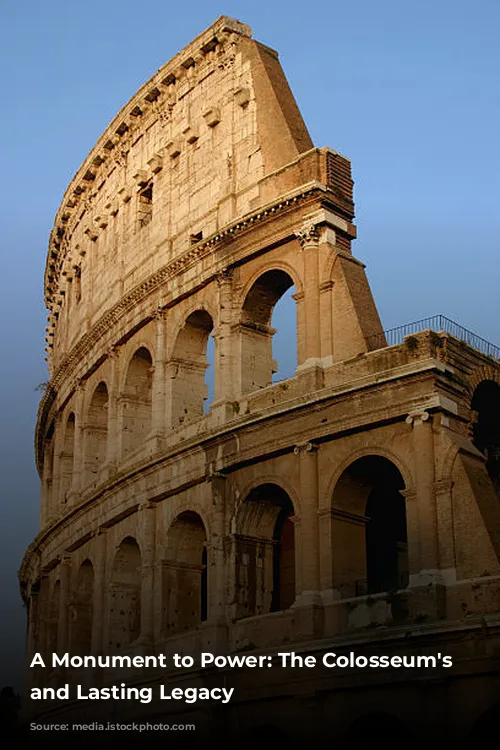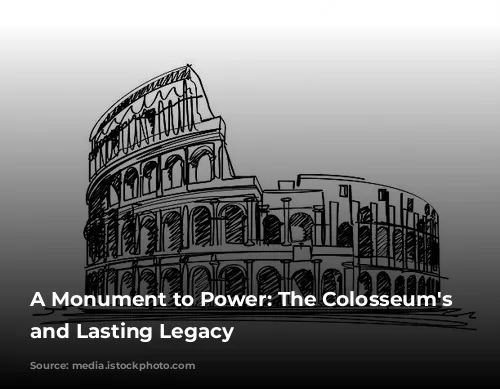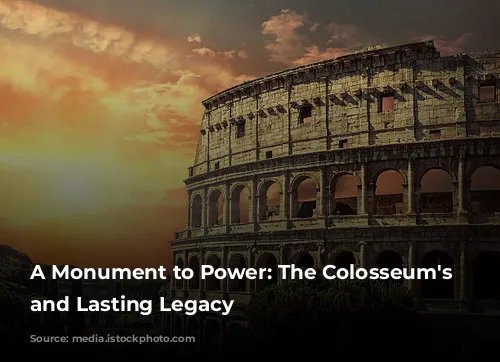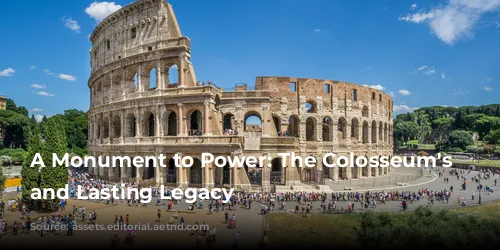The Colosseum, once known as the Flavian Amphitheater, towers as a breathtaking testament to the grandeur of ancient Rome. More than just a venue for blood-sport entertainment, this iconic landmark stands as a powerful symbol of the Flavian Dynasty and their ambitious vision for the city’s resurgence.
From Ruins to Resurgence: The Birth of an Empire’s Symbol
After years of fire, plague, and civil war, Rome lay in ruins. The Flavian Dynasty, led by Emperor Vespasian and his sons Titus and Domitian, embarked on a monumental task: rebuilding the city’s shattered spirit. They envisioned a new Rome, one that reflected their power and vision.
The Colosseum emerged as a centerpiece of this renewal project. Funded by the spoils of the Roman conquest of Jerusalem, its construction became a bold statement of the Flavian Dynasty’s dominance. Dedicated ten years after its groundbreaking, the Colosseum served as a tangible symbol of Rome’s reborn strength and the Flavian Dynasty’s firm grip on power.
An Architectural and Engineering Marvel
The Colosseum wasn’t merely a symbol, it was a masterpiece of engineering and architecture. It was the largest and most complex permanent amphitheater of its time, boasting a staggering capacity of 50,000 to 80,000 spectators. Its construction relied heavily on concrete, along with millions of cubic feet of travertine, marble, stone, and timber. This incredible feat of engineering resulted in a structure that rose to a height of 157 feet – roughly the height of a 15-story building!
The Colosseum wasn’t just an engineering feat; it also embodied Roman social structure. It was built on the site of Nero’s Domus Aurea, an estate that had been accessible to all, much to the dismay of the Roman senators. By building the Colosseum, the Flavian Dynasty cleverly reinvented this space as a public arena for entertainment, while simultaneously reinforcing the rigid social hierarchy of Roman society.
A Seat for Every Social Class
Inside the Colosseum, social status dictated your place in the crowd. The most coveted seats, closest to the action, were reserved for the Emperor and the elite senators. Above them, the Equestrian order, a group of successful merchants, artisans, and bureaucrats, held their place. The remaining 95 percent of the population – women, foreigners, and the less fortunate Romans – occupied the less desirable upper seating areas.
Despite the disparity in seating, the Colosseum’s elliptical architecture ensured that everyone had a clear view of the arena. To facilitate the smooth flow of spectators, the Colosseum boasted four entrances for the elite and 76 for the ordinary citizens. Corridors separated these groups, keeping the social order intact.
The Colosseum’s Architectural Legacy
The Colosseum’s grandeur lay not just in its size and social implications, but also in its architectural innovations. While many amphitheaters of the time were built of wood and were temporary, the Colosseum was a permanent structure, crafted from stone.
Its architects, while unknown, drew inspiration from Greek theaters and incorporated a series of impressive columns, arches, and barrel vaults. But the most crucial innovation was the use of concrete. This material allowed for the creation of such a massive and complex structure, demonstrating the remarkable ingenuity of Roman engineers.
The Colosseum’s enduring legacy is a testament to its robust construction. Its solid concrete foundation, meticulously built in a challenging wetland area near the Tiber River, has enabled it to stand for over 2,000 years. This feat is further amplified by the Colosseum’s sophisticated drainage system, retractable awning, and intricate hypogeum – a network of chambers and tunnels beneath the arena floor that housed props, scenery, and participants.
A Controversial Legacy: The Colosseum’s Workers
While the Colosseum’s magnificence is undeniable, its construction also raises questions about the labor behind its creation. Many scholars believe that the Colosseum was partly financed by the spoils seized during the Roman raid of the Jerusalem Temple.
The conventional wisdom suggests that 100,000 Jewish slaves captured during the Siege of Jerusalem were forced to work on the Colosseum’s construction. However, evidence supporting this claim is lacking. While it is highly likely that enslaved people played a significant role in the Colosseum’s construction, the exact number and their origins remain uncertain.
The Enduring Impact of the Colosseum
The Colosseum’s influence extends far beyond its physical presence. This iconic landmark has served as a model for modern outdoor stadiums, inspiring the use of arches for support, elliptical shapes, and organized seating systems.
More than just a structure, the Colosseum stands as a powerful reminder of the grand ambition and architectural prowess of ancient Rome. It serves as a captivating window into a bygone era, offering insights into the society, culture, and engineering marvels of this influential civilization.


